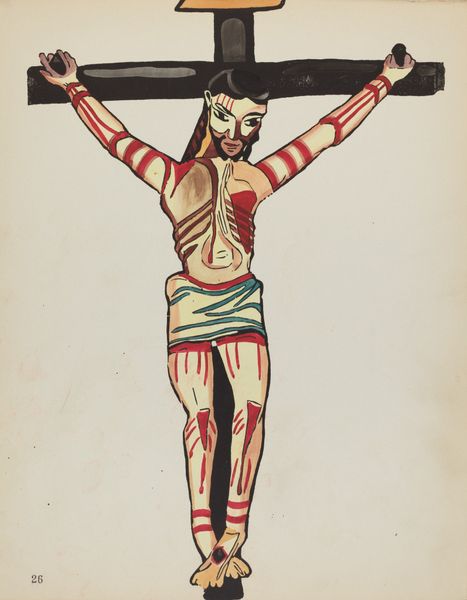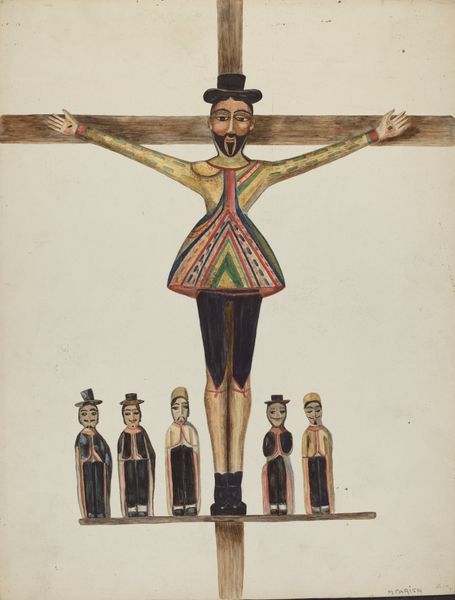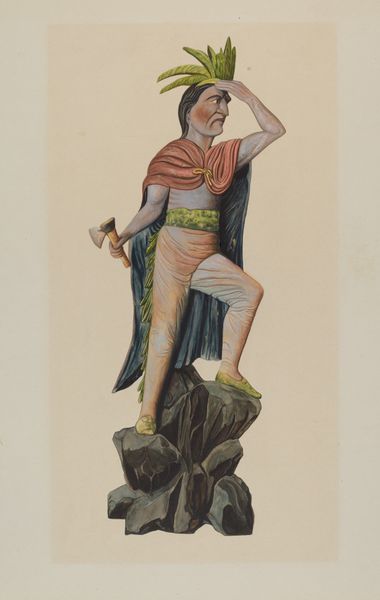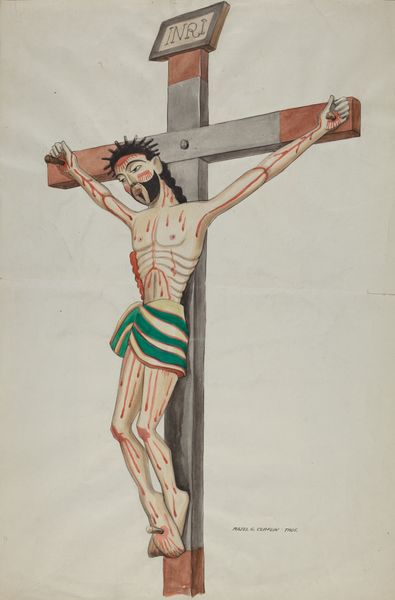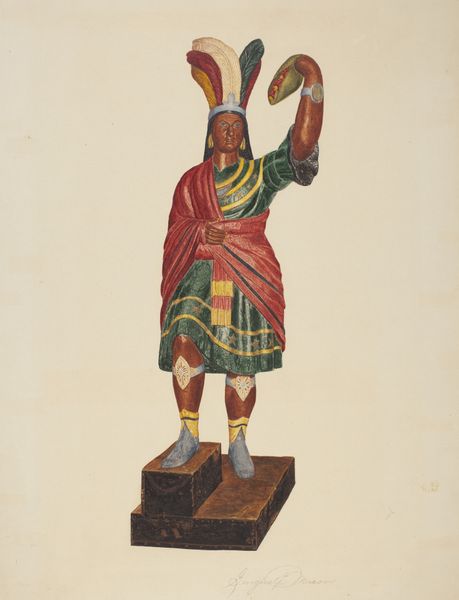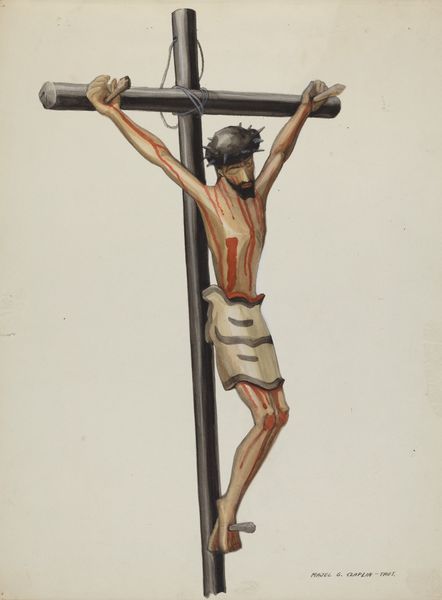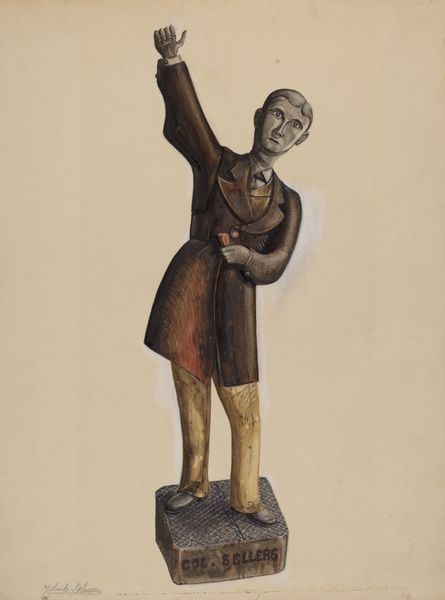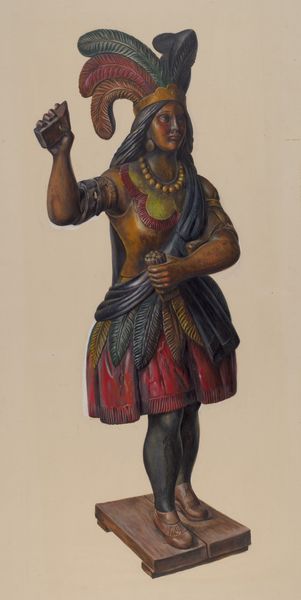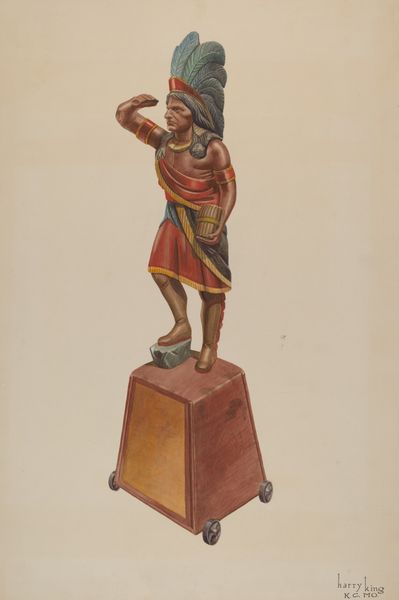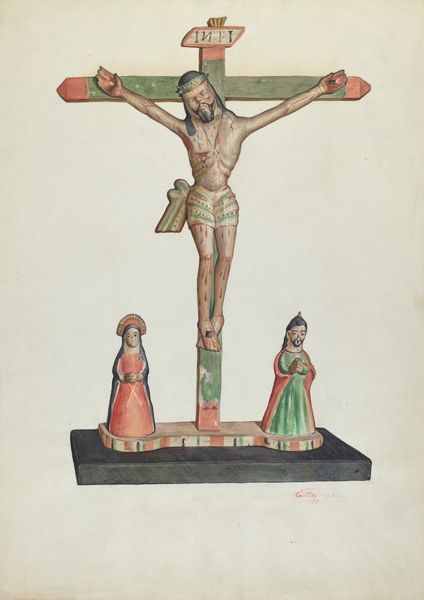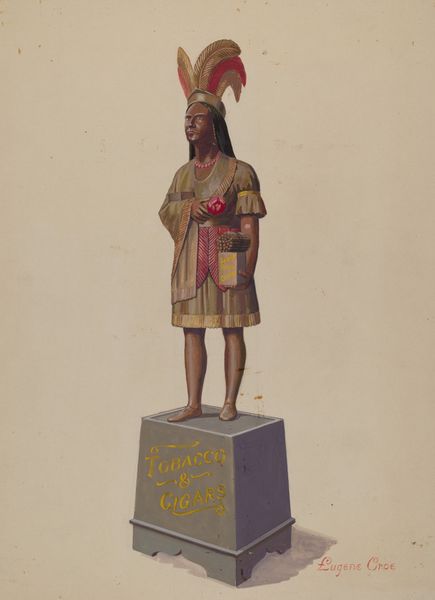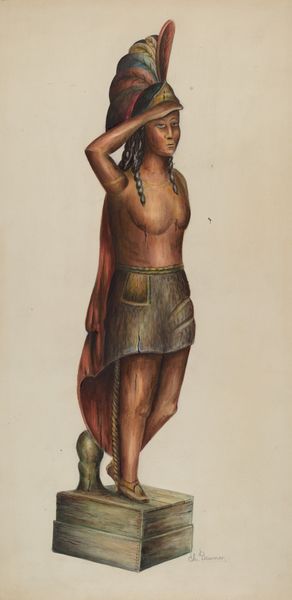
drawing, watercolor
#
drawing
#
narrative-art
#
caricature
#
caricature
#
charcoal drawing
#
figuration
#
watercolor
#
folk-art
#
history-painting
Dimensions: overall: 36.3 x 27.9 cm (14 5/16 x 11 in.) Original IAD Object: 1/3 actual size
Copyright: National Gallery of Art: CC0 1.0
Editor: Here we have "Crucifix, from Vicinity of Taos," created between 1935 and 1942 by E. Boyd, using watercolor and charcoal. There’s a striking rawness to the figure; what are your thoughts on how Boyd portrays this subject, especially considering the materials? Curator: The use of watercolor and charcoal is key here. These accessible, almost humble, materials are quite telling. It signals a process rooted more in observation and documentation, than idealized representation. Look at the sketch-like quality; how might that speak to its intended audience and use? Editor: I hadn't considered it in that light, but the almost illustrative style does lend itself to being more widely accessible, perhaps as a devotional aid or record. Is there something you can share on the production of it being "folk art?" Curator: Absolutely. Understanding it as folk art places importance on local, communal production. The creation likely involved less emphasis on academic skill and more on readily available resources and techniques. Notice how the medium affects the overall impact of this figure. How does its materiality impact how we perceive themes of suffering or salvation typically associated with the crucifix? Editor: Now I see that using inexpensive and easily obtainable materials underscores the piece's relationship with the local community and moves the focus from idealized notions to the act of devotion. Curator: Precisely. By analyzing the materials and processes, we uncover a narrative not just of religious symbolism but also of labor, accessibility, and cultural context that shaped the creation of this work. Editor: It's fascinating to see how the medium and technique influence my interpretation of its message and historical context. I will definitely view other works differently going forward.
Comments
No comments
Be the first to comment and join the conversation on the ultimate creative platform.
